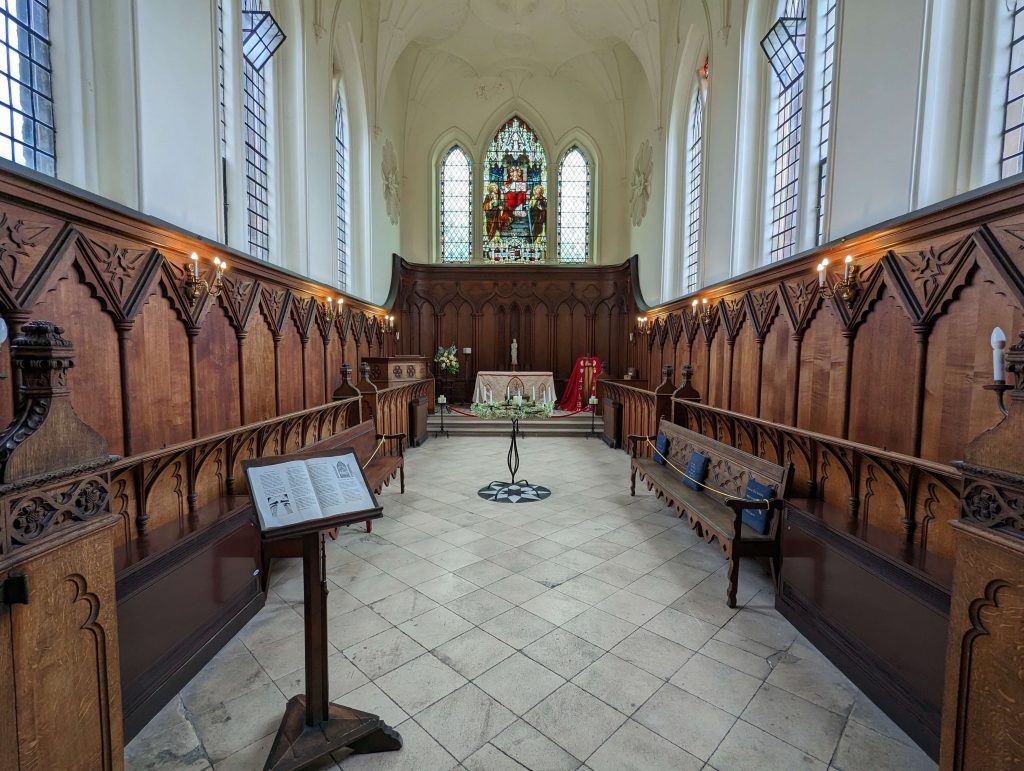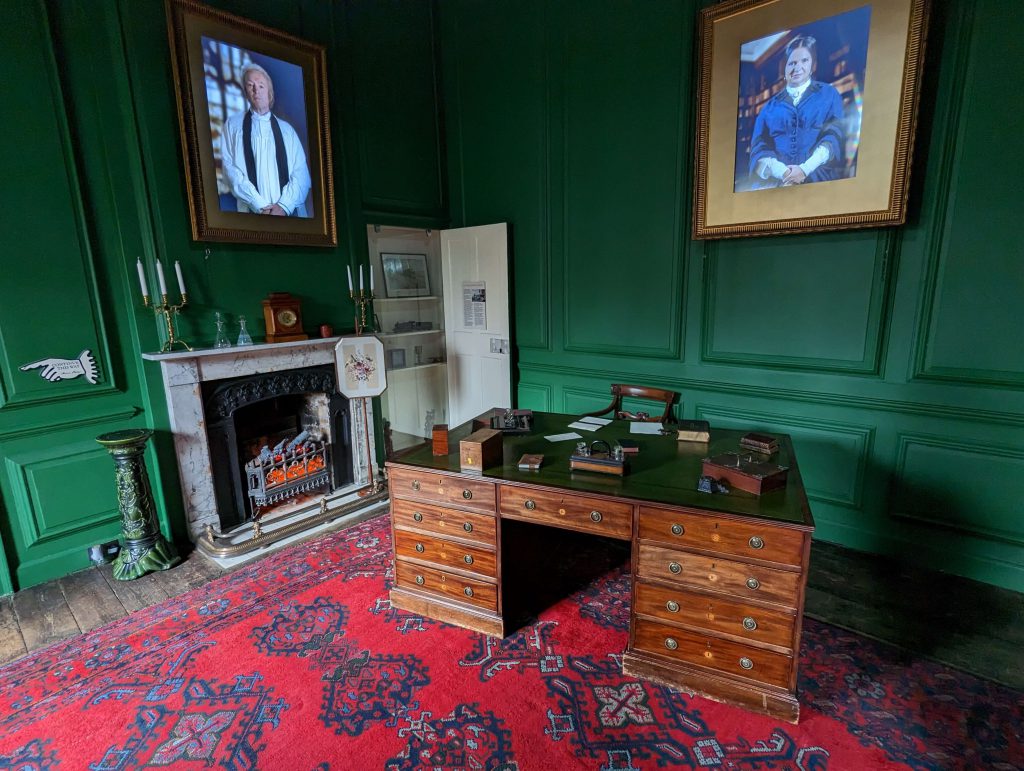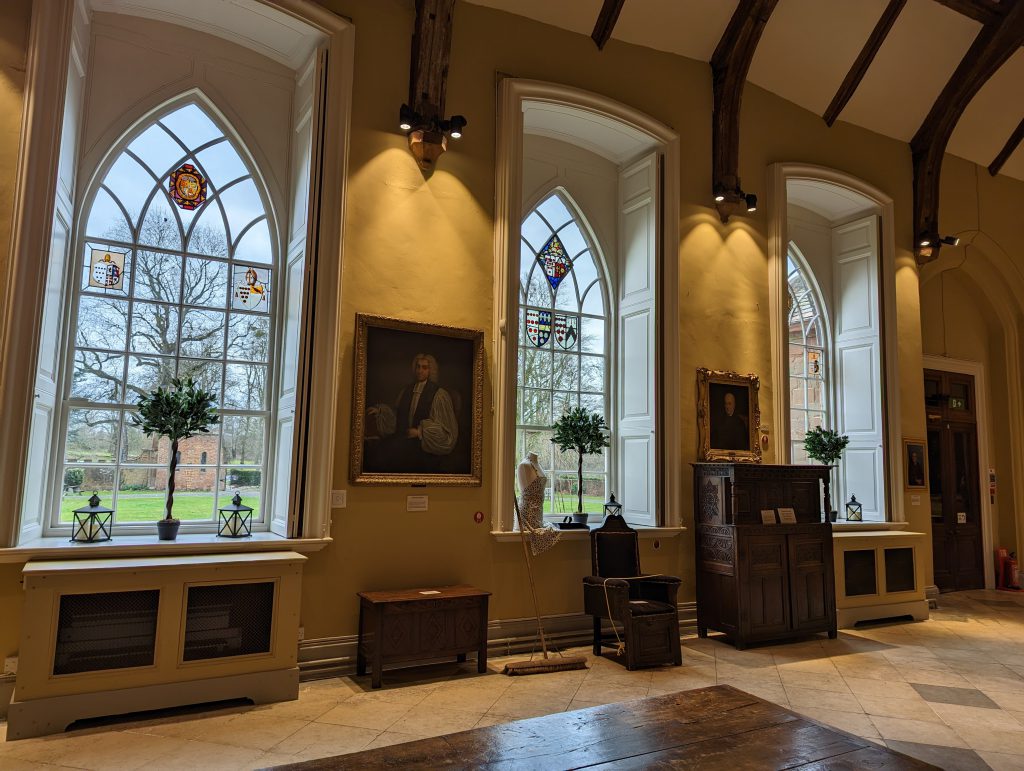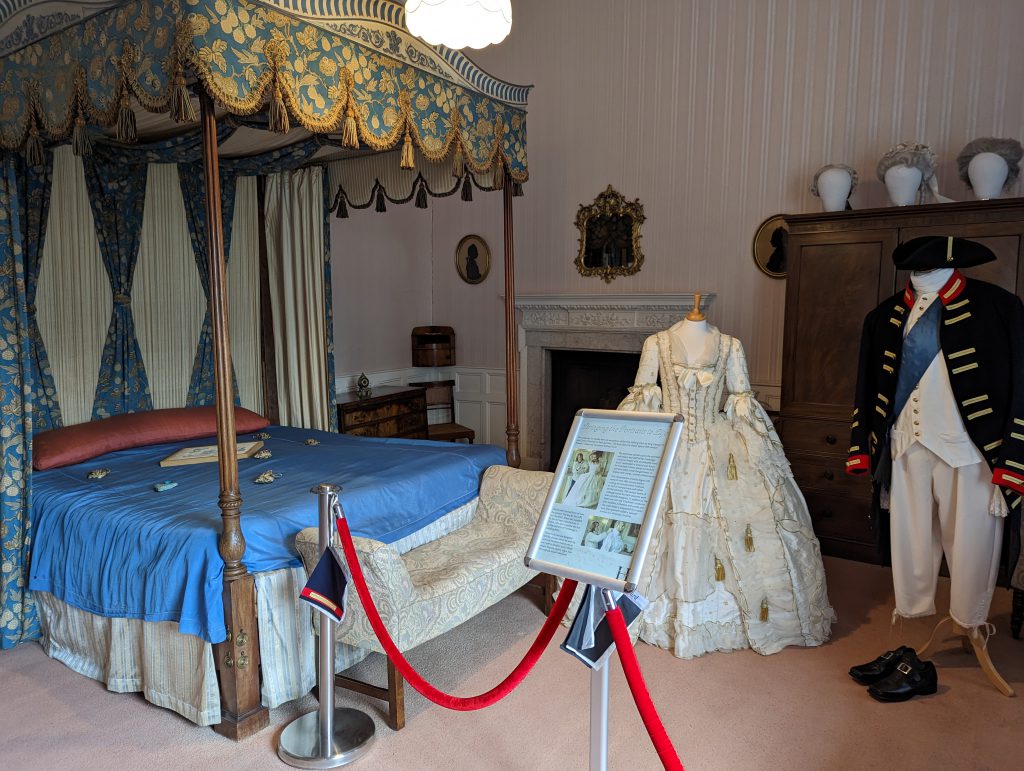Hartlebury Castle is a 13th century fortified manor house near the village of Hartlebury in Worcestershire and has been the home of the Bishop of Worcester from 854 all the way up to 2007.
| Built | 13th Century |
| Type | Fortified Manor House |
| Condition | Intact |
| Ownership | Hartlebury Castle Preservation Trust |
| Access | Public – Admission Fee |
| Postcode | DY11 7XZ |
Click here to view our video exploring Hartlebury Castle and listen to it’s history
Early History
During approximately 854 AD, the Saxon King of Mercia, Burgred, bestowed the territory of Hartlebury upon the Bishop of Worcester. This transfer of land was possibly an astute strategy by Burgred to employ the bishop’s personal soldiers to defend the region from the Vikings who were progressing towards the south along the River Severn, and the Welsh tribes who posed a threat to the west. Despite Burgred’s intentions, this grant of land provided the Church with a valuable area to construct a Bishop’s Palace, which evolved over time.
The exact timeframe of when the initial structures emerged on the site remains ambiguous; however, we have confirmed that as early as 1237, a substantial manor house comprising a chapel and a hall was erected on the premises. The location may have served as a hunting lodge as well, given that the name Hartlebury is believed to have originated from an Old English term denoting “a location or enclosure for deer.”


In 1268, Henry III granted the right for Godfrey Giffard, his Chancellor, to crenellate (fortify) the existing building at the site resulting in the new name Hartlebury Castle. Hartlebury Castle also received its first Royal visitor in 1282, King Edward I stopped with his army en route to Wales for battle.
As Tudor England started to take form towards the end of the 15th century, a group of Italian Bishops of Worcester were appointed. Despite never having visited their diocese or even the country, these bishops still collected revenues and rents from their English estates. Among them was Giulio de’ Medici, a member of the influential Florentine family, who served as the Bishop of Worcester from 1521 to 1522. Later, he was elected as Pope Clement VII and gained notoriety for refusing to grant King Henry VIII’s request for a divorce from Katherine of Aragon. This led to the severing of the English Church from Rome and the dissolution of the monasteries.
Between 1535 and 1539, during an era of major religious change known as The Reformation, Bishop Hugh Latimer became the first protestant Bishop of Worcester. Bishop Latimer gained favour with King Henry VIII by advocating for the annulment of his marriage to Catherine of Aragon and supporting the dissolution of Catholic monasteries. However, during the reign of the Catholic Queen Mary I, he was imprisoned and ultimately condemned for heresy. In 1555, Bishop Latimer was burned at the stake for his beliefs.


Later in 1575 Queen Elizabeth stayed for one night at Hartlebury when travelling to Worcester. Consistent with her reputation, it appears that Queen Elizabeth I nearly depleted the finances of Bishop Nicholas Bullingham during her visit to Hartlebury Castle. Bishop Bullingham had made several enhancements to the castle and gardens in preparation for her arrival, and he was also responsible for providing food and entertainment for her entourage of more than one hundred individuals.
From 1577 to 1583, Bishop John Whitgift became bishop of Worcester. Whitgift was Protestant and Queen Elizabeth I was so impressed by his preaching that she appointed him as her Chaplain. Later, Whitgift was beside Elizabeth and held her hand upon her deathbed. It was also Whitgift who signed the marriage papers for a rather well known playwright called William Shakespeare and his wife, Anne Hathaway. Unlike most churchmen of the time he never censored Shakespeare’s plays.
English Civil War
During the First English Civil War (1642-1646) the Castle was re-fortified and was held for King Charles I. Under the command of Captain William Sandys 120 men were garrisoned in the Great Hall with supplies to last a year. In anticipation of a possible siege, the fortifications of Hartlebury Castle were also reinforced, and ditches and ramparts were dug out in the adjacent fields.
In May 1646, the castle was taken by the Parliamentarian forces under the command of Colonel Thomas Morgan. No shots were fired, and after a siege of two days the castle was surrendered. Following the Civil War, the castle was used as a prison for Royalists. There were plans to demolish the castle entirely by Parliament but this proved to be too expensive so Hartlebury Castle was sold to Thomas Westrow for £3,133.


Return to the Bishops and Restoration
In 1660 the monarchy was restored and Charles II was crowned king. Hartlebury Castle was returned to the Bishops, but the condition of the castle was extremely poor which made it very inhospitable.
When Charles II made James Fleetwood the new Bishop of Worcestor, a restoration project was undertaken in order to bring some of the former glory to the castle. Fleetwood didn’t see the need to live in a fortified castle, so instead transformed it into the country mansion that stands today using the ample funds made available for the restoration.
Later History
In 1782, Bishop Hurd built the Hurd Library which even today contains his extensive collection of books, including a copy of Iliad (one of two major Greek epic poems attributed to Homer). King George III, Queen Charlotte, the Duke of York and three of the princesses visited Bishop Hurd in 1788.
The Royal family’s excursion began at 7am in Cheltenham, and they traversed 33 miles by carriage to arrive at Hartlebury in time for an 11 am breakfast served by the bishop himself. The meal included tea, coffee, chocolate, and jellies. Following breakfast, the royal family strolled along the terrace of the chapel garden, where they were greeted by a crowd of at least 8,000 spectators who cheered them on. They departed at 2pm to return to Cheltenham, completing a journey of nearly 70 miles in a single day. Even in the best carriages, this must have been an arduous experience!


After the start of the Napoleonic Wars (1803 – 1815) King George III was nervous about the threat of invasion by Napoleon and began to form a plan of possibly moving to either Hartlebury Castle or the Old Palace in Worcester.
A few years later in 1807, The Prince of Wales (and the future George IV) visited Bishop Hurd, who by this time was 87 and was showing his age. The stay lasted less than one hour.
Bishop Henry Pepys moved into the Castle in 1841 and his 10 year old daughter Emily wrote a diary which describes in quite some detail how her family lived.


20th Century
During the first World War the Red Cross used the castle as a Voluntary Aid Detachment.
In 1964 Worcestershire County Council took over the north wing and in 1966 opened the Worcestershire County Museum to the public.
In 2007 Bishop Selby retired and the Church Commission decided to sell Hartlebury Castle and its land. This would be the last Bishop of Worcester to reside in the castle. The following Bishops would go on to live in a house next to Worcester Cathedral in the heart of the city.
With Hartlebury Castle up for sale there was worry that it might fall into private hands, so a registered charity called the Hartlebury Castle Preservation Trust was formed. After a few years of campaigning the trust was able to raise enough money to purchase the castle and its land in 2015. By 2018 renovations were complete and the castle was opened to the public.
Click below to explore Hartlebury Castle with us

